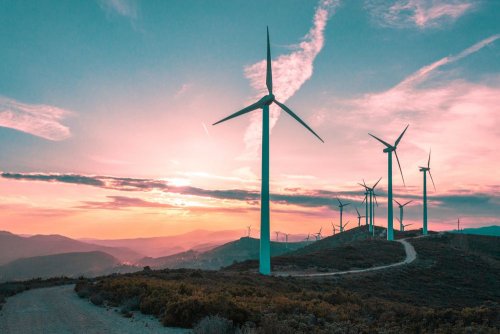China is the world’s largest economy in purchasing power parity, the world’s largest annual emitter of greenhouse gas emissions and the world’s largest renewable energy market. As a result, China-based investments are an important part of an institutional or retail investing portfolio for green and decarbonization opportunities.
This was stated by the editor-at-large of the professional publication GreenBiz and author of the book "Sustainable Development at Work" Marilyn Waite.
She noted that by the end of 2021, China held 306 GW of installed solar and 328 GW of installed wind capacity. China-based firms produce over 72 percent of the world’s solar modules, 69 percent of lithium Ion batteries and 45 percent of wind turbines.
In contrast, domestic gas and coal output is on the rise; coal output in the first two months of 2021 increased over 10 percent compared to 2020. Thus, the Chinese pathway of simultaneously increasing clean energy and dirty energy mirrors that of the United States and Europe, concluded the expert.
In the backdrop of this market context is the Chinese government’s ability to keep climate promises on the global stage, including staying in the Paris Agreement. If that trend continues, including making good on the pledge to peak carbon emissions by 2030 and reach carbon neutrality by 2060, then investors can expect fruitful China-based climate opportunities in the private markets, bank lending and credit and public capital markets.
According to Waite, China-based investments are an important part of an institutional or retail investing portfolio for green and decarbonization opportunities.
"Venture capital continues to flood the Chinese market for climate deals. Despite a general downturn in VC in China, especially in certain sectors such as for-profit education, over $8.5 billion was invested in Chinese cleantech startups in 2021", it is said in the article..
With a middle class of over 400 million, China’s retail banking and investing market is ripe for sustainable finance innovation. On the lending and product side, many of China’s 4,500-plus banks are taking the lead. Bank of Jiangsu (江苏银行) was the first A-share listed bank in China to launch a photovoltaic loan. The neo bank WeBank (微众银行) is an online-only retail bank serving the real economy; through Green Bud Points, WeBank encourages the public to reduce carbon emissions by recording daily green behaviors and rewarding those behaviors with credits that can redeem vouchers and gifts. WeBank also provides credit to help small and micro enterprises procure greener solutions.
On the public equities side, Chinese ESG labeled funds surpass $18 billion in assets under management. For non-Chinese investors, exposure to China’s $11 trillion stock market and $16 trillion bond market occurs in several ways, including:
- Qualified Foreign Investor, via mainland China, both USD and RMB options;
- China Interbank Bond Market (CIBM Direct), via mainland China;
- Bond Connect, via Hong Kong, license-free and quota-free;
- Stock Connect, via Hong Kong, license-free and quota-free;
- Shanghai-London Stock Connect (for non-Chinese investors to access Chinese A-shares), via the London Stock Exchange.
Within emerging markets funds, investors can often find climate-friendly Chinese companies. The Stewart Investors Global Emerging Markets Sustainability fund contains at least 13 percent Chinese equities. MSCI has a suite of China ESG indexes, but nothing the likes of Carbon Collective’s Climate Index for U.S.-listed stocks. The Invesco Great Wall Environmental Protection Advantage Equity Fund invests 80 to 95 percent of its assets in environmental protection-related securities. The CSI 300 Carbon Neutrality Index (Chinese), launched in March, excludes high-emitting companies rated B and below and achieves a better carbon performance (at least a 20 percent reduced carbon intensity) compared with the CSI 300 Index, which tracks the top 300 stocks traded on the Shanghai Stock Exchange.
Regs and markets
Among the ingredients that make up a favorable green investing and lending environment include climate-related financial regulations, consumer preferences and growth or profitability prospects.
On the regulatory side, two Chinese policies bear mentioning.
First, the People’s Bank of China (PBoC) introduced a carbon-emission reduction facility in 2021, making it by far the world’s leading central bank with respect to climate-related risks and opportunities. Under this facility, commercial and retail banks are eligible to borrow 60 percent of qualifying green loans from the central bank at an interest rate of 1.75 percent with a one-year maturity, with an option to rollover twice. Considering that the normal PBoC loan prime rate is closer to 4 percent, the carbon reduction facility is a significant benefit to the green economy.
Second, since February, all regulated companies in China must publicly disclose environmental information (Chinese), including absolute carbon dioxide emissions, or face a fine up to just under $15,000. The current regulation on corporate climate disclosures is vague, with no mention of emissions scopes, although the Ministry of Ecology and Environment is expected to provide more specific guidance.
One blended-finance vehicle points to opportunities at the sub-national level in China. According to Convergence, blended finance is the "use of catalytic capital from public or philanthropic sources to increase private-sector investment in sustainable development." The Shandong Green Development Fund Project is a blended-investment vehicle, combining capital from the Qingdao Municipal Government, and a series of multilateral, private, institutional and commercial financers to invest in Shandong’s transition to low-carbon infrastructure.
Investors looking for greenfield opportunities in China, especially those that incorporate a diversity, equity and inclusion lens, may want to look beyond the saturated cities of Shanghai, Beijing, Shenzhen and Guangzhou to other regions of economic development, the expert concluded.
Before EcoPolitica wrote that on February 1, 2021, China introduced national CO2 emissions trading system. The launch of the system is designed to contribute to the decarbonization of China's national economy by 2060.





